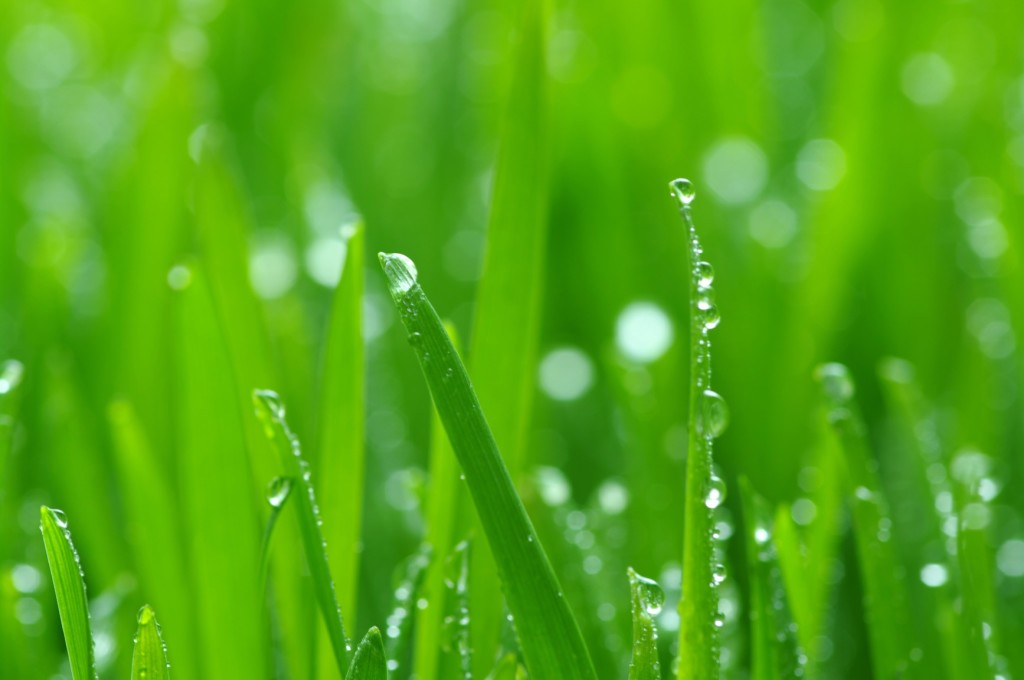Greetings Lawn Lovers!
This is the 4th and final week of our drought tolerant lawn blog. Today, we will dive deeper into the best irrigation options for your drought tolerant California lawn!
REDUCING WATER UTILIZATION
While turf grasses need water to grow, you can maintain a lawn and also reduce water requirements by 25% by understanding the basic needs of your turf. We have already talked about Warm Season and cool season grasses, which are the two primary types of turf used for lawns in California. In Southern California both species can be successfully used, but in northern California cool season grasses are the most prominent.
TURF GRASSES EVAPORATE WATER
Turf grasses transpire a very small amount of water through plant pores, and a larger amount of water via evaporation from the leaf surfaces. This water usage by the plant is calculated as the evapotranspiration (ET) rate. The ET rates are based on a number of fac-tors that can include: local temperature, effect of the sun’s energy, precipitation, cloud cover, and the type of plants you are growing. ET rates are calculated by local universities or weather service stations.
DEFICIT IRRIGATION
What is deficit irrigation, and how does it help?
Lawns need an optimum amount of irrigation to have the best appearance, but lawns can get by on much less water and survive hot and dry periods by ‘deficit irrigation’. Deficit irrigation, provides just enough water for adequate appearance and less growth, and can offer a 25% water savings for cool season and warm season lawns.
Choosing the right turf species is also important. Slow growth rate and narrow leaves are a few properties of low water use turfgrasses. Drought resistance is the ability of a plant to retain moisture and drought avoid-ance is ability of a plant to minimize damage caused by drought – both these qualities are important. Re-search is underway to develop species and cultivars that have both lower water use and drought tolerance.
HOW TO MANAGE YOUR TURF & REDUCE WATER REQUIREMENTS
One research entity that qualifies grasses that demon-strate a statistically significant water saving potential over conventional varieties of the same species is The Turfgrass Water Conservation Alliance. www.tgwca.org
TWCA trials are run for a minimum of two years to collect data. Out of this program several branded product lines have been created. Aquawise, Water Star and Green Guard are brands are all offered in our current product line.
For more information see our Partner site at Stoverseed.com to download a TWCA information sheet.
IDEAL MAINTENANCE PRACTICES LEAD TO WATER PRESERVATION
• Irrigate at the right time. The best time to water a lawn is between 2:00 AM and 8:00 AM when evaporation is minimal.
• Regular inspection of your irrigation system is important to detect runoff or broken heads.
• Watering your turf at a deficit level will save 25%of water needed for optimum growth.
• Setting the mower higher promotes deeper roots and higher water use, and closer mowing reduces evapo-transpiration. However grasses stressed by heat and drought should be mowed infrequently and at a taller height. Never mow turf when it is hot, or, when the soil is dry.
OTHER TIPS
Fertilizer use: Nitrogen causes turf to grow and use more water
• For Cool Season grasses: During drought the lowest amounts of Nitrogen should be applied. Should not be fertilized from May – September.
• For Warm Season grasses: During drought do not exceed 0.25 lb. of Nitrogen / 1000 SF per month from April – September
Soils that are compacted reduce root growth and water infiltration resulting in poor turf health. Aeration can improve root growth and water infiltration. Thatch in a soil consists of decaying roots, stems and other plant parts. The thatch layer can get so thick that it repels water which can be improved by de-thatching. Aeration and de-thatching should be done in fall or spring and avoided in summer. Home Depot rents powerful de-thatching equipment. It is very affordable and relatively easy to use.
KEEPING YOUR LAWN AND MEETING WATER REDUCTION TARGETS! YOU CAN DO IT!
By changing the way you managing turf: reducing your watering to what the turf requires at deficit lev-\els, minimizing inputs, and reviewing your mowing strategies during times of drought, you can still have a lawn. Remember, turf helps cool the environment and reduce erosion. Turf grass filters water as it moves through the soil, and it helps to remove carbon dioxide and sulfur dioxide from the environment.
Turf grass also produces oxygen which makes our environment habitable. A 50’x 50′ lawn produces enough oxygen for a family of four.
Thank you for following! If you are interested in learning more about waterwise hydroseeding applications for your home or business,please call
Canyon Hydroseeding today at: (951) 680-1949
 Information compliments of Stover Seeds! Best Quality Seeds on the market!
Information compliments of Stover Seeds! Best Quality Seeds on the market!

